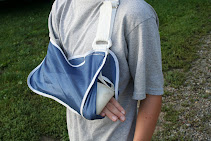The Consumer Product Safety Commission reveals that emergency room injuries from amusement park rose almost 87 percent in the last five years.
Just a year ago, two boys drowned in a separate water park incidents. The mother of one victim alleged that there was no adequate supervision at the park when her son was drowned.
Due to such event, a lawmaker proposed a new regulation requiring water parks to carry at least $1 million in liability insurance.
This proposal has caused some eyebrows to raise especially owners of water parks themselves. Obviously, getting an insurance policy would mean addition costs on their part.
This cold response of water park owners calls for the approval of this proposal sooner. If no regulations or standards are implemented then we can never be sure of the safety of our children.
California, specifically the southern part is the land of amusement parks. There are probably more water parks here than in other parts of country.
California's Division of Occupational Safety and Health investigates the most serious accidents. Their investigation reveals that most injuries were minor, and most happened on speed slides or in wave pools.
As summer is nearing, children are going back to these parks. Chances are water park accidents such as drowning or contracting diseases due to polluted water may likely happen if no steps are undertaken to regulate the operation these parks.
Just a year ago, two boys drowned in a separate water park incidents. The mother of one victim alleged that there was no adequate supervision at the park when her son was drowned.
Due to such event, a lawmaker proposed a new regulation requiring water parks to carry at least $1 million in liability insurance.
This proposal has caused some eyebrows to raise especially owners of water parks themselves. Obviously, getting an insurance policy would mean addition costs on their part.
This cold response of water park owners calls for the approval of this proposal sooner. If no regulations or standards are implemented then we can never be sure of the safety of our children.
California, specifically the southern part is the land of amusement parks. There are probably more water parks here than in other parts of country.
California's Division of Occupational Safety and Health investigates the most serious accidents. Their investigation reveals that most injuries were minor, and most happened on speed slides or in wave pools.
As summer is nearing, children are going back to these parks. Chances are water park accidents such as drowning or contracting diseases due to polluted water may likely happen if no steps are undertaken to regulate the operation these parks.






